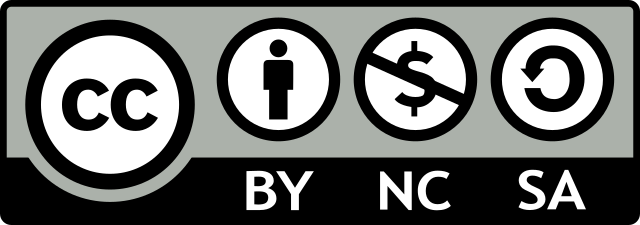Arabic Language Practice in Islamic Boarding Schools : (a Linguistic Landscape Study)
Abstract
The female Mambaus Sholihin Boarding School implements a bilingual policy, namely Arabic and English, in the daily life of the santri. This study aims to analyze the influence of the linguistic landscape (LL) on the practice of speaking Arabic in the pesantren. The linguistic landscape in this pesantren encompasses three main languages, namely Indonesian, Arabic, and English, with a specific focus on the role of Arabic in LL and its impact on the habit of speaking Arabic among the santri. A qualitative approach was used to collect data in the form of photographs of visual signs in the pesantren environment, both in the form of infrastructural information and regulative restrictions. The analysis was conducted based on the type of language used, the distribution of Arabic, and how the positional configuration of the sign supports the practice of Arabic. The results show that the dominant presence of Arabic signs in the pesantren landscape, both monolingual and bilingual, creates an adequate environment to motivate santri to speak Arabic. Arabic is often placed positionally higher, indicating its priority in pesantren culture. The alignment between the bilingual policy and the supportive linguistic landscape facilitates natural and contextualized language learning. This study provides implications that language use practices in pesantren can be integrated as teaching materials to support contextualized, meaningful learning of Arabic along with its integration into language teaching methods to strengthen students' speaking competence.
References
Ahmad Mohammad Atouf Aldershawi, Asem Ashehadeh Ali, Fahed Marmor, and Mohammad Ahmad Alqudah. “استراتيجيات تعلّم مهارة الكلام لدارسي اللغة العربية في تركيا للمبتدئين / Strategies for Learning Speaking Skill for Arabic Language Learners in Turkey for Beginners.” مجلة الدراسات اللغوية والأدبية (Journal of Linguistic and Literary Studies) 13, no. 2 SE-Linguistic Studies (November 29, 2022): 5–19. https://journals.iium.edu.my/arabiclang/index.php/jlls/article/view/990.
Aladjem, Ruthi, and Bibiana Jou. “The Linguistic Landscape as a Learning Space for Contextual Language Learning.” Journal of Learning Spaces. Vol. 5, 2016.
Alenizi, Aied. “Internal Structure of Oral Narrative in Arabic.” Journal of Language and Linguistic Studies 16, no. 4 (2020): 2059–76. https://doi.org/10.17263/JLLS.851034.
Blackwood, Robert, Stefania Tufi, and Will Amos. The Bloomsbury Handbook of LINGUISTIC LANDSCAPE. 1st Edition. Vol. 1. London: Bloomsbury Publishing, 2024. https://books.google.co.id/books?hl=id&lr=&id=kpsHEQAAQBAJ&oi=fnd&pg=PA2002&dq=+Spolsky+and++Cooper’s+signs+taxonomies+based+on+the+function+and+the+use+of+the+signs&ots=ZhNY2TLgOE&sig=ufOz4NQWgDkxsbV4xD9aTLdocQ0&redir_esc=y#v=onepage&q&f=false.
Bogdan, Robert,C. dan Biklen, Sari Knopp. Qualitative Research for Education : An Introduction to Theory and Methods. London: Allyn and Bacon, Inc., 1982.
Chamidah, Dewi, Abdullah Sarif, and Syafiyatul Maf’udah. “Language Differences in the Quran and Their Implications for Arabic Teaching in Indonesia.” Arabiyatuna: Jurnal Bahasa Arab 7, no. 2 November (November 17, 2023): 505. https://doi.org/10.29240/jba.v7i2.8376.
D. Gorter. “Further Possibilities for Linguistic Landscape Research.” In Linguistic Landscape: A New Approach to Multilingualism, 81–89. (Clevedon UK: Multilingualism Matters), 2006.
Denzin, Norman K, Lincoln, Yvonna S. Handbook of Qualitative Research. London : Sage Publications, 1994.
Gorter, Durk. “Linguistic Landscape as an Additional Source of Input in Second Language Acquisition.” IRAL - International Review of Applied Linguistics in Language Teaching 46 (October 27, 2008): 257–76. https://doi.org/10.1515/IRAL.2008.012.
H. Douglas Brown. Principles of Language Learning and Teaching. USA: San Fancisco State University, 2007.
“Interview Results with ‘Ustadzah Farihah’ as the Head of Pondok Pesantren Mambaus Sholihin Putri, (Location: Front of OSPPMS Office), 7 May 2024.,” n.d.
John W. Creswell. Research Design, Qualitative, Quantitative, and Mixed Method Approaches. Edisi Keem. SAGE Publication, 2014.
Kevin Lane Keller. Strategic Brand Management: Building, Measuring, and Managing Brand Equity, 2013.
Kosim, Nanang, and Ami Gusmiati. “IMPLEMENTASI COMMUNITY LANGUAGE LEARNING DALAM PEMBELAJARAN BAHASA ARAB.” Ta’lim Al-’Arabiyyah: Jurnal Pendidikan Bahasa Arab & Kebahasaaraban 2, no. 2 (December 15, 2018): 122–32. https://doi.org/10.15575/jpba.v2i2.9560.
Landry, Rodrigue, and Richard Y. Bourhis. “Linguistic Landscape and Ethnolinguistic Vitality.” Journal of Language and Social Psychology 16, no. 1 (March 26, 1997): 23–49. https://doi.org/10.1177/0261927X970161002.
Mahoney, Michael. “Implementing Evidence-Based Practices within Multi-Tiered Systems of Support to Promote Inclusive Secondary Classroom Settings.” The Journal of Special Education Apprenticeship 9, no. 1 (January 1, 2020). https://doi.org/10.58729/2167-3454.1095.
Makinuddin, Mohammad. “PEMEROLEHAN BAHASA ARAB MELALUI PEMBELAJARAN KITAB KUNING DI PESANTREN INDONESIA.” JALIE; Journal of Applied Linguistics and Islamic Education, 2022, 213–30.
Mensel, Luk Van, Mieke Vandenbroucke, and Robert Blackwood. “Linguistic Landscapes,” 423–49, 2016.
Morgan, Harry. “An Analysis of Gardner’s Theory of Multiple Intelligence.” Roeper Review 18, no. 4 (June 1996): 263–69. https://doi.org/10.1080/02783199609553756.
Pennycook, Alastair. Global Englishes and Transcultural Flows. Routledge, 2006. https://doi.org/10.4324/9780203088807.
Platt Richard and H. Weer. Longman Dictionary of Applied Liguistic. London: Longan, 1452.
SCHMIDT, R. W. “The Role of Consciousness in Second Language Learning1.” Applied Linguistics 11, no. 2 (June 1, 1990): 129–58. https://doi.org/10.1093/applin/11.2.129.
Selinker L. “Interlanguage.” In International Review of Applied Linguistic 10 : 209-31, 1972.
———. “Interlanguage.” In Jack C. Richard (Ed), Error Analysis Perspective on Second Language Acquisition, 31–54. London: Longman, 1972.
Shohamy, Ben Rafael, Monica Barni. Introduction: An Approach to an Ordered Disorder Linguistic Lanscape in the City. Canada: Multilingual Matters, 2010.
Skutnabb‐Kangas, Tove. “Cummins, Jim.” In The Encyclopedia of Applied Linguistics. Wiley, 2012. https://doi.org/10.1002/9781405198431.wbeal0306.
Spolsky, Bernard. “Linguistic Landscape.” Linguistic Landscape. An International Journal 6, no. 1 (March 16, 2020): 2–15. https://doi.org/10.1075/ll.00015.spo.
Syafiyatul Maf’udah, dkk. “Strategy for Developing the Arabic Environment at Madrasah Tsanawiyah Negeri (MTsN) 3 Malang.” Al-Mahara (Jurnal Pendidikan Bahasa Arab) 10, no. 2 (December 2024): 5–6.
Taylor, Peter Charles. “Contemporary Qualitative Research.” In Handbook of Research on Science Education, Volume II. Routledge, n.d. https://doi.org/10.4324/9780203097267.ch3.
Topçiu, Marta, and Johana Myftiu. “Vygotsky Theory on Social Interaction and Its Influence on the Development of Pre-School Children.” European Journal of Social Sciences Education and Research 4, no. 1 (August 30, 2015): 172. https://doi.org/10.26417/ejser.v4i1.p172-179.
Ward, Rebecca, and Justin Awani. “Bilingualism and Flexibility in Task Switching.” Studies in Second Language Acquisition, May 23, 2024, 1–17. https://doi.org/10.1017/S0272263124000378.
Waring, Hansun Zhang. “Promoting Self-Discovery in the Language Classroom.” International Review of Applied Linguistics in Language Teaching 53, no. 1 (January 1, 2015). https://doi.org/10.1515/iral-2015-0003.
Widiyanto, Gunawan. “PEMAKAIAN BAHASA DI MADRASAH: KAJIAN LANSKAP LINGUISTIK SEKOLAH.” Prosiding Konferensi Linguistik Tahunan Atma Jaya (KOLITA) 22, no. Prosiding KOLITA 22 (October 1, 2024): 171–80. https://doi.org/10.25170/kolita.22.6006.
Copyright (c) 2025 Syafiyatul Maf'udah, Uril Bahruddin, Nur Hasan Abdul Barry

This work is licensed under a Creative Commons Attribution-NonCommercial-ShareAlike 4.0 International License.

